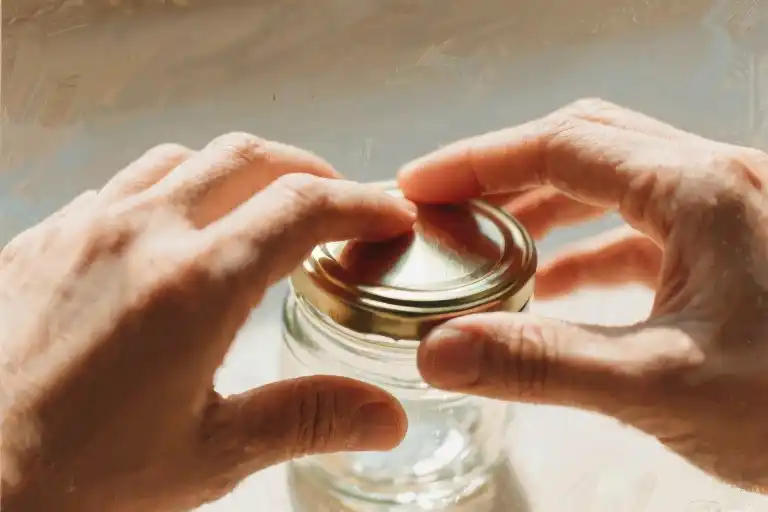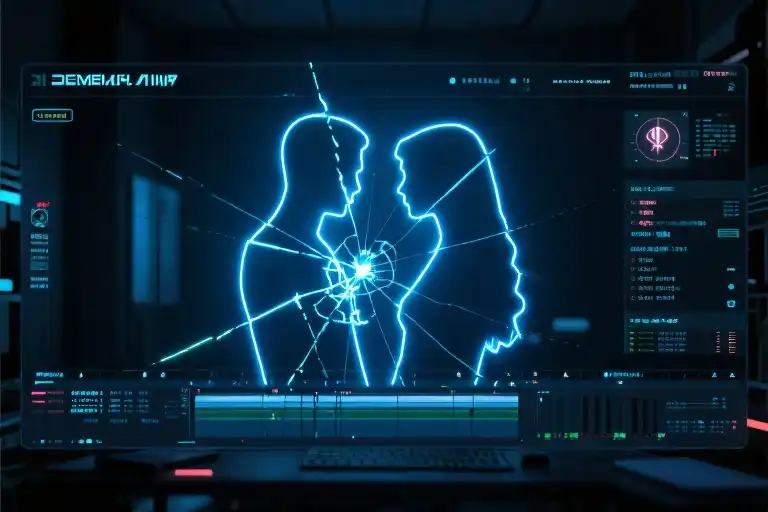The knot in my stomach tightened as I scrolled through another Instagram post celebrating someone’s “best decision ever.” Perfect smiles, champagne toasts, carefully curated captions about bold choices. My thumb hovered over the like button while my gut twisted with quiet recognition: 83% of life’s most important transitions happen without witnesses or applause. No camera crews, no cheering squads – just you, your racing heartbeat, and that persistent ache below your ribcage that won’t be ignored.
What we rarely see in those highlight reels are the choices that feel less like victory and more like heartbreak. The ones where saying “yes” to yourself requires saying “no” to people you still love. Where growth wears the uncomfortable disguise of loss. At 25, standing in my dimly lit kitchen on a Wednesday night with rain streaking the windows, I faced one such decision – the kind that never makes it onto social media but alters the course of your life.
This is about understanding why the most painful goodbyes often become the first honest yes we’ve given ourselves in years. It’s about recognizing when relationships that once fit like favorite sweaters now constrict like shrinking fabric. And most importantly, it’s about trusting those physical signals – the stomach knots, the held breaths, the delayed laughter – that our bodies use as Morse code when our minds aren’t ready to admit the truth.
We live in a world that celebrates dramatic breakups and explosive resignations, but the real transformations happen in quieter moments. That subtle shift when you realize your childhood friends’ jokes land differently now. The growing awareness that their priorities no longer map onto yours. The way your shoulders relax when plans get canceled. These aren’t failures of loyalty – they’re evidence of you listening to a wisdom deeper than nostalgia.
My story isn’t about toxic friendships or unforgivable betrayals. It’s about the more confusing, more tender territory of simply outgrowing people while still caring for them. About how friendship drift can happen without fighting or fanfare, through countless micro-moments where you feel slightly out of sync. Where you notice yourself pausing half a beat before joining the laughter, or checking your watch during what should be comfortable silences.
That Wednesday night in my kitchen, with the hum of the refrigerator and the rhythmic tap of rain, my body finally forced a conversation my mind had been avoiding. The stomach knots weren’t anxiety – they were confirmation. The tightness in my chest wasn’t fear – it was recognition. And the decision that followed, though it broke my heart to make, became the foundation for every authentic choice that came after.
What follows isn’t just my story, but a framework for anyone sensing that quiet dissonance between who you’re becoming and the relationships you’ve outgrown. We’ll explore how to distinguish temporary loneliness from necessary distance, how to honor changing values without villainizing the past, and why sometimes the kindest goodbye is the one that needs no dramatic explanation – just the courage to trust your gut when it speaks in knots and whispers.
The Truth Your Body Already Knows
That persistent knot in your stomach isn’t just indigestion – it’s your body’s ancient warning system sending encrypted messages about alignment. Modern neuroscience confirms what poets always knew: our gut literally contains a second brain. The vagus nerve, this bi-directional superhighway connecting abdomen to cranium, fires signals faster than conscious thought can process them. When your stomach tightens during certain conversations or your breath shallows around particular people, that’s not random discomfort – it’s physiological wisdom.
Three Silent Alarms We Mistake for Background Noise
- The Delayed Laugh
That 0.3-second hesitation before joining group laughter isn’t social awkwardness – it’s your nervous system refusing to counterfeit joy. Like when Sarah’s joke about the homeless man landed and your diaphragm froze mid-breath. - The Phantom Watch Check
When you glance at your wrist during what should be quality time, notice the specific moment triggering this escape reflex. Was it their fifth complaint about corporate diversity initiatives? The way they mocked your new meditation habit? - The Post-Hangover Hangover
Next-day exhaustion after ‘fun’ nights out isn’t just from alcohol. Your adrenal system works overtime managing cognitive dissonance between their values and your emerging ones.
These signals were conspicuously absent during friendship’s golden years – back when staying up till 3am felt energizing rather than depleting, when inside jokes sparked genuine belly laughs rather than performative chuckles. The contrast itself becomes diagnostic: discomfort marks the distance between who you were and who you’re becoming.
“Growth often whispers through somatic Morse code before it forms coherent thoughts.”
This visceral intelligence operates on a different timeline than social expectations. While your friend group might still celebrate the same annual traditions, your body’s subtle reactions chart an alternative course – one where familiar gatherings start feeling like wearing last season’s skin. That tightening in your solar plexus when Mark tells his borderline racist ‘joke’ again? That’s not discomfort – it’s navigation.
The Silent Season of Friendship
The strongest relationships often erode like coastlines—not in catastrophic collapses, but through countless imperceptible waves. Looking back, I can now trace five crystalline moments when my body knew what my mind refused to acknowledge.
1. The Delayed Laugh (Time Distortion)
That Thursday game night, their joke about the new coworker hung in the air for 0.7 seconds too long—just enough time for my stomach to knot before my lips mechanically curled upward. The humor that once bonded us now tasted faintly metallic.
2. The Phantom Itch (Spatial Awareness)
My fingers kept brushing against the faded friendship bracelet during movie nights, its threads fraying in sync with my patience. The woven colors had muted over years of sunscreen and swimming pools, much like our shared vocabulary.
3. The Calendar Calculus (Energy Accounting)
Scheduling app notifications triggered Pavlovian dread. What began as “Can’t wait!” responses evolved into complex equations: 2 hours of socializing = 3 days of emotional recovery.
4. The Anthropological Shift (Values Realignment)
Their roaring laughter at someone’s misfortune landed like a misplayed note. My silence during these moments grew heavier, the weight of unspoken disapproval altering the group’s chemistry.
5. The Bathroom Epiphany (Physical Truth-Telling)
At Rachel’s birthday, I found myself calculating escape routes from the bathroom stall. The mirror showed a stranger performing my face—smile muscles engaged, eyes scanning for exits. My feet had turned toward the door before conscious permission.
These weren’t dramatic betrayals but subtle atmospheric changes. Like carbon monoxide detectors, our bodies signal invisible dangers through headaches at certain gatherings or the inexplicable relief of cancelled plans. That discolored friendship bracelet became my personal litmus test—when its presence felt more like a tourniquet than a connection, I finally understood.
“Growth happens in the pauses between shared laughter, measured by the milliseconds your response lags behind.”
The birthday bathroom moment crystallized the truth: we hadn’t changed away from each other, but toward different north stars. No villains, just tectonic plates shifting at imperceptible speeds. That’s when I began drafting goodbye letters I’d never send—not to them, but to the version of myself that still believed friendship could be measured in decades rather than depth.
The Gentle Exit Playbook
Ending relationships gracefully requires more emotional intelligence than dramatic confrontations. This isn’t about ghosting or manufactured conflicts – it’s the art of honoring your growth while respecting shared history. Having navigated this terrain myself, here’s what makes space retreats work:
The Staircase Method for Space Retreat
- Frequency Adjustment (Weeks 1-4):
- Reduce group gatherings by 25% each month
- Replace one weekly hangout with a solo activity you’ve postponed
- Notice which absences feel like relief versus loneliness
- Interaction Reshaping (Month 2-3):
- Shift physical meetups to asynchronous communication
- Gradually increase response time from immediate to 24-hour cycles
- Observe which connections naturally sustain this rhythm
- Energy Boundaries (Ongoing):
- Wear something tangible (specific bracelet/watch) as a tactile reminder of your intention during interactions
- Leave gatherings when your neck muscles tighten – no justification needed
Pro Tip: The body keeps score better than your calendar. Track physical reactions post-meetups in a notes app – patterns emerge faster than you’d think.
Symbolic Object Rituals That Actually Help
| Object Type | Transition Ritual | Psychological Function |
|---|---|---|
| Digital | Archive (don’t delete) old photos in a password-protected folder | Creates mental distance without destructive erasure |
| Physical | Repurpose one shared item (concert tee→ workout shirt) | Signals neural rewiring through tactile experience |
| Ephemeral | Burn printed text messages with intentionality (safety first!) | Ceremonial release of emotional weight |
What surprised me? The VHS tapes we made stayed untouched. Some bonds deserve preservation in their original form – selectivity becomes your superpower.
Three Explanation Traps to Sidestep
- The Forensic Defense
- Trap: Compiling exhaustive lists of “reasons” to justify your choice
- Reality: This often invites debate rather than understanding
- Alternative: “I’m honoring what my whole self needs right now”
- The Mutual Blame Illusion
- Trap: Searching for equal “fault” to make the split feel fair
- Reality: Growth divergence isn’t about fault lines
- Alternative: “We’ve simply become different gardeners”
- The Closure Obsession
- Trap: Demanding final conversations to tie everything neatly
- Reality: Like removing orthopedic casts, some support systems must dissolve gradually
- Alternative: Let last interactions be ordinary – profound goodbyes often happen mid-sentence
Remember: Your nervous system recognized this shift before your mind caught up. Those stomach knots were trail markers, not obstacles.
The Scaffolding Metaphor
Rebuilding your social architecture resembles physical therapy after years in a supportive brace:
- At first, muscles protest the unfamiliar freedom
- Weakness exposed isn’t failure – it’s information
- New strength emerges in unexpected places
- Some original structures remain load-bearing
What I wish I’d known? The phantom limb sensations fade. You’ll stop reaching for shared jokes that no longer land, and one morning you’ll notice – the absence no longer aches, it just is.
“The quietest revolutions begin with subtraction.”
The New Map in Your Hands
That faded VHS tape still sits on my bookshelf, its spine cracked from years of rewinding our teenage adventures. Next to it now rests something new – a boarding pass stub from my solo trip to Iceland last winter. This accidental still life holds the quiet truth about painful goodbyes: they don’t erase what was, they simply make space for what needs to be.
The Archaeology of Moving On
Cleaning out my closet last spring, I developed a ritual archaeologists would appreciate. Every friendship artifact required triage:
- Layer 1: Immediate discard (dried-up markers from inside jokes nobody remembers)
- Layer 2: Digital preservation (scanning photos before the colors fade further)
- Layer 3: Sacred keeping (that single VHS containing our terrible superhero movie)
This process revealed something unexpected – our most painful transitions become bearable when we honor them with deliberate physical actions. The act of sorting through tangible remnants creates psychological closure that hours of overthinking never achieves.
Your Body’s Postscript
[Author’s Note]: As I type these final paragraphs, my right hand keeps drifting to my solar plexus – not in the old anxious way, but with the quiet assurance of someone double-checking a locked door. My diaphragm expands fully for what feels like the first time in weeks. The body remembers everything.
The Question I Can’t Answer For You
What geographical feature is your body currently mapping? For me it was that knotted feeling below the ribs. For you it might be:
- The weightless sensation when certain names appear on your phone
- The inexplicable fatigue after “fun” gatherings
- That specific tension along your jawline during particular conversations
These somatic signals form the contour lines of your personal growth topography. The real voyage isn’t about leaving others behind – it’s about following your body’s compass toward the life where you can finally exhale.
“Some paths can only be walked alone, not because we’re lost, but because we’ve finally remembered how to find ourselves.”
On my Iceland hike last winter, the tour guide taught me this local proverb: “The glacier doesn’t apologize for carving the valley.” Neither should we for shaping our lives. That VHS tape remains precious precisely because I no longer need it to define me – its presence now coexists with boarding passes to places my younger self couldn’t have imagined.
Your new map is already being drawn in the language of goosebumps, quickened pulses, and those deep belly breaths that come when you’re finally heading home – to yourself.





